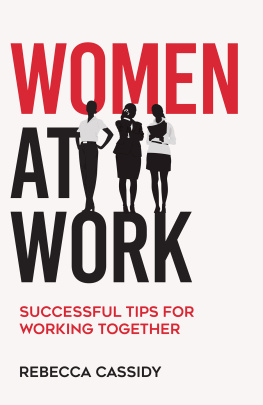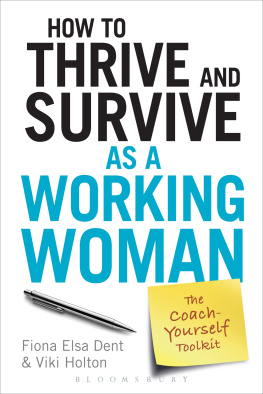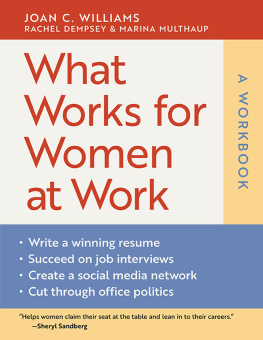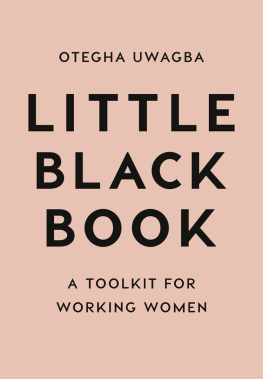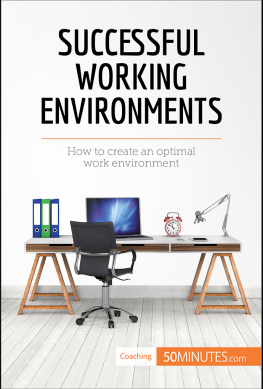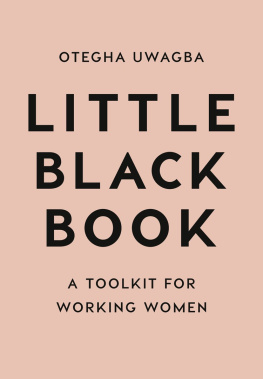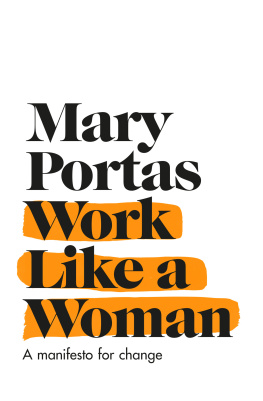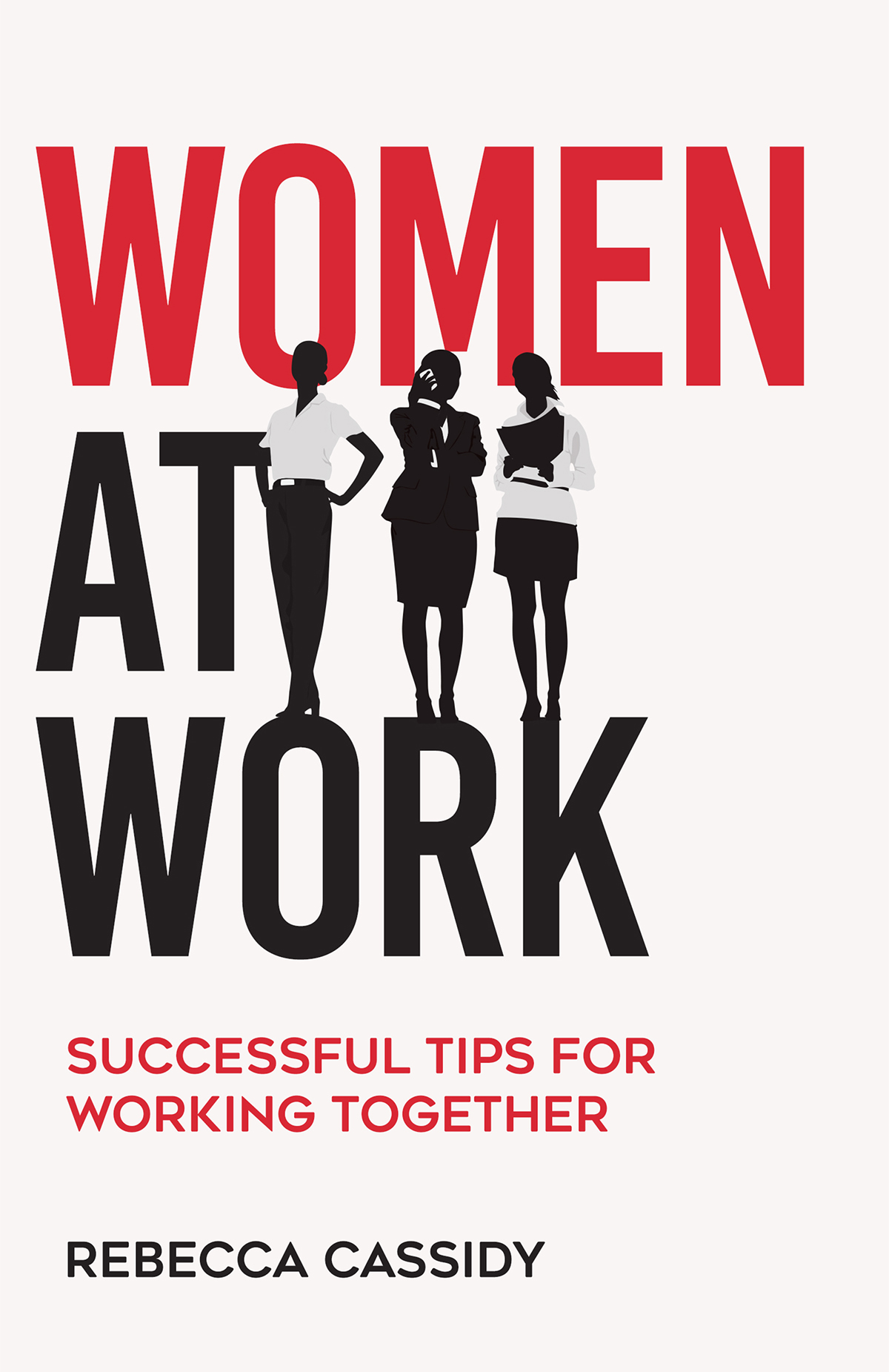
NEW DEGREE PRESS
COPYRIGHT 2021 REBECCA CASSIDY
All rights reserved.
WOMEN AT WORK
SUCCESSFUL TIPS FOR WORKING TOGETHER
ISBN 978-1-63730-826-4 Paperback
978-1-63730-888-2 Kindle Ebook
978-1-63730-962-9 Ebook
WOMEN AT WORK
We will surely get to our destination
if we join hands.
Aung San Suu Kyi
CONTENTS
PART 1.
CHAPTER 1.
CHAPTER 2.
CHAPTER 3.
PART 2.
CHAPTER 4.
CHAPTER 5.
CHAPTER 6.
CHAPTER 7.
CHAPTER 8.
CHAPTER 9.
CHAPTER 10.
CHAPTER 11.
INTRODUCTION
I tell women that whole you can have it allmmm, nope, not at the same time. Thats a lie. Its not always enough to lean in because that s*** doesnt work.
Michelle Obama.
I was desperately trying to move out of my current job. The effect it was having on my mental health was crushing. I commuted an hour per day to work, sat alone in an office most of the day with rare human interaction, responded to angry emails, and updated the same spreadsheets over and over again. Then I sat in traffic for an houron a good dayto complete the thirteen-mile commute home, only to repeat the whole affair the next day.
After a year of this grind, I had become depressed and unfocused, which led to uncharacteristic mistakes. These lapses led to more frustration and depression and without anyone around me at work to bounce ideas off or even to have lunch with, I mentally and emotionally began to spiral.
I soon realized this work environment was not good for me, nor was it going to change anytime soon without any action on my part. I began applying to jobs at similar organizations in the area, but to little avail. After several months of applications, I received an interview invitation response from just one organization, but it was my top choice, my aspirational employermy stretch school, if you will.
While there were a few downsides to the opportunity, this new job was at an organization that offered day-to-day variety in responsibility, the potential for career progression, and at its core, day-to-day human interaction and responsibilities beyond just spreadsheet work.
I wanted this job. Desperately.
So I interviewed. And interviewed. And interviewed. Three rounds of interviews with eleven different people later, I received an email with an informal offer outlining the title and salary. The email ended with, Are you still interested?
Hell yeah, I was interested! I was so excited. Excited to move out of my current situation, excited to move into an environment that was surely better for my health and my career. So, I took the next step as instructed by all the women-in-business books I had read: I began negotiating my salary.
The salary being offered was the same as I received at my current job, so it certainly wasnt unacceptable. But Im worth more, right?If Im not going to control my own financial destiny, then who is? Girl power!
So, I asked for 5 percent more than the offer, willing to meet somewhere in the middle. Plus, the director I was interacting with was a womanthe person I had interviewed with multiple times, the person who would be my bosss boss. Surely, shed respect my willingness to negotiate.
Nothing could have prepared me for the next email she sent me.
Im sorry, but we cant offer you the position at that salary. We may have something opening up in the futurewe will be in touch.
I was crushed under the weight of those two sentences. Gone was my chance to move on, to start a career rather than just working a day-to-day job. There was no negotiation, no second chance. Did I ask for too much money? Did I start negotiating at the wrong point in the process? Was I too pushy? Or were all the books wrong?
After a day or two of tears, devastation, and bewilderment, I went back to the women-in-business books to figure out where I had gone so wrong. It appeared I had followed procedure. I must just have been really bad at this negotiation thing, plain and simple. Because if the tactics, printed in black and white for the whole world to see, didnt lead to the outcome they predicted, then it must have been me. Books must be correct, right?
There is a bit of a happy ending to this story.
I gave myself a couple of weeks to settle down, and on a whim, reached out to the director again to see if something else had opened, as she had hinted at in her last email. I was in luckanother role in the office had opened, and she asked me to come in for another conversation.
Huzzah!
I went in about a week later, had another conversation, and was offered the role. Same title as before, same responsibilities, but the interesting part was the salary was lower than that fateful first offer. This time, I eagerly accepted the position without a peep.
Upon moving into this new organization, I began a journey of observation. This new office was comprised of all women, from the receptionist up through the director. It wasnt that I hadnt had women bosses or colleagues in the past; in fact, most of my supervisors up until this point had been women. And I like working with other womenits my comfort zone. But this was the first time I had worked in an office that was all women.
I quickly learned that the rules for succeeding in this new environment did not follow the rules outlined in the women-in-business books. Despite my best efforts to conform, I continued to make missteps.
Negotiation was clearly differentI had already learned that the hard way. I tried to lean in by offering my opinions in staff meetings; I was told in no uncertain terms to pipe down. I wanted to start new programs and offerings as innovation and creativity were encouraged; I could do so as long as all credit was given to my director. I wanted to collaborate with others across the organization; I first needed permission from my director, and I was to copy her on all emails and keep her in the loop of all conversations.
Again, on paper it doesnt sound particularly crazya boss should know what is happening with her staff and what projects they are working on. But this felt different. I had originally attributed these rules to the director and her need for control, but when she left to move to her next organization, nothing changed. There just seemed to be an unwritten set of rules that everyone else knew but me.
Im a business/leadership book junkie, so I kept consulting the women-in-business books to figure out what those rules were. What I found, though, was that the vast majority of the books were about women working in male-dominated environments, usually from the perspective of working in Silicon Valley.
That is all fine and good, but what about when your boss is a woman, or when your work environment is mostly women? With women now making up nearly 50 percent of the workforce (US Bureau of Labor Statistics, 2020), what should women do to succeed in a female-led or female-dominated environment? Is there a different set of rules that apply? And if so, what are those rules?
Determined to figure out the answers to these questions, I began my research with this hypothesis in mind:
The rules for success when working in a primarily female environment are different than those for women working in a primarily male environment.
I began talking to women who had worked with and for other women. I started by asking the question, What was it like to work for your female boss/colleague/subordinate? Unsurprisingly, the first stories I heard were about the stereotypes. The backstabbing, the gossiping, the bad behavior our society likes to highlight in everything from scholarly journals to reality TV.

